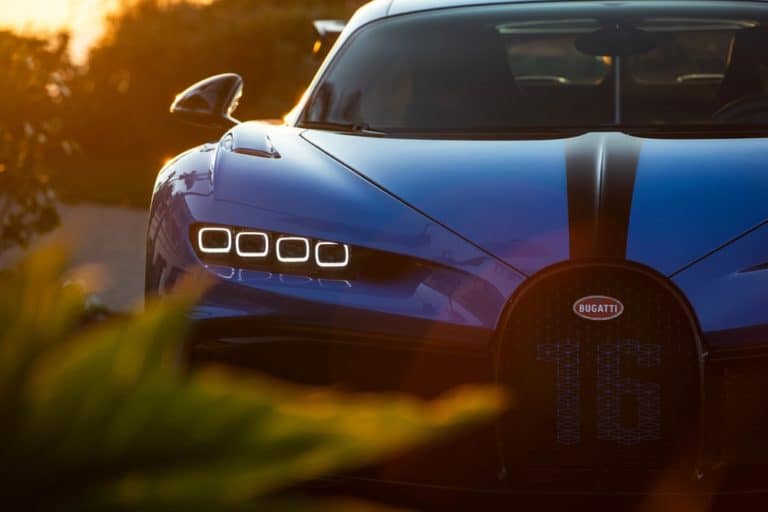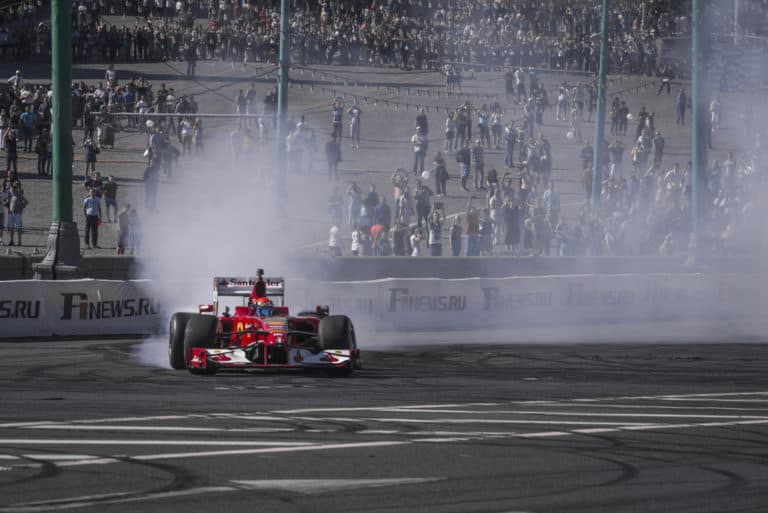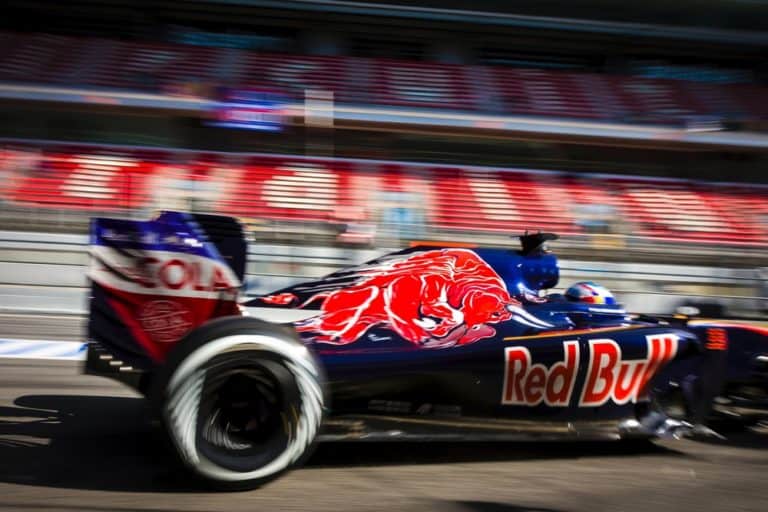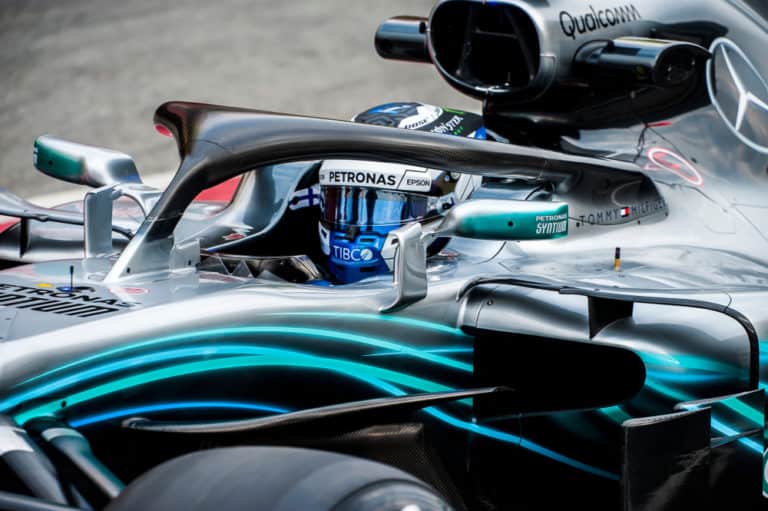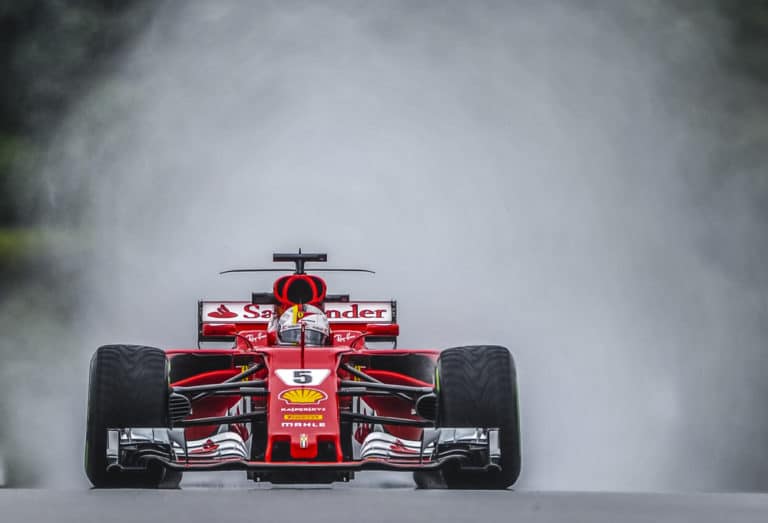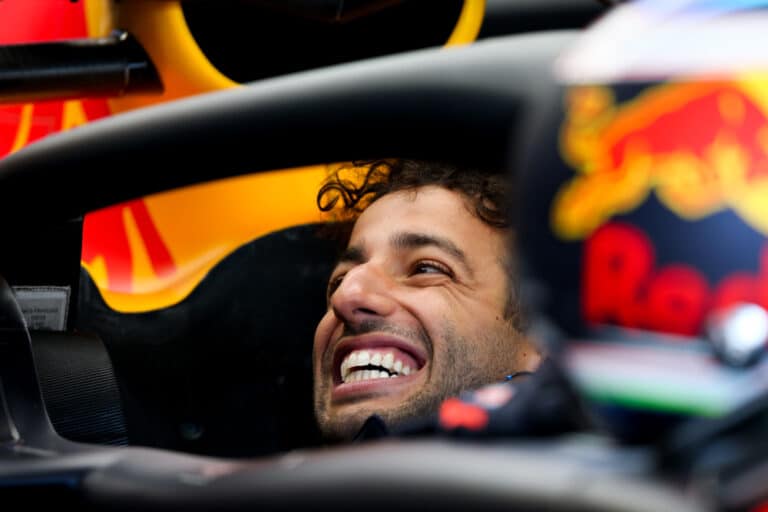Racing circuits have to meet fluctuating FIA standards in order to host a Formula One Grand Prix. Therefore Formula One tracks do not remain stagnant as international venues in the same way as other sports like football. Consequently, how many Formula One tracks are there for the 2022 season?
Despite the Russian Grand Prix having been canceled (see below for further details), the FIA has committed to finding a replacement between the Singaporean and Japanese Grand Prixs. Subsequently, the 2022 Formula One Championship will take place over twenty-three tracks globally.
Let’s explore these twenty-three tracks below to try and understand why the FIA has designated them for the 2023 season and what this could mean for the teams and drivers in the coming months ahead!
If you’re looking for some F1 merchandise, check out the awesome stuff at the official F1 store here.
Cancelled: Sochi Autodrom

What should have been the final swan song for the Sochi Autodrom as the host of the Russian Grand Prix before moving to Igora Drive for the 2023 season has ended in disaster, with Sochi being canceled as a racing venue following Russia’s recent military intervention in Ukraine.
While it cannot be said how long the ban will last, the canceling of Sochi and the continued postponement of a Russian Grand Prix doesn’t bode well for future Formula One events being held in Russia in the foreseeable future.
At present, Malaysia, China, Portugal, and Germany are possible suggestions to replace the Russia Grand Prix between the 23rd and 25th of September 2022.
| Location | Sirius, Krasnodar Krai, Russia |
| Capacity | 55,000 |
| Length | 5.848 km (3.634 mi) |
| Turns | 18 |
| Race Lap Record | 1:35.761 (Lewis Hamilton, Mercedes W10, 2019) |
18 – 20 March: Bahrain International Circuit

Playing host to round one of the Formula One Championship and designed by legendary engineer Hermann Tilke, the Bahrain Grand Prix is recognized as the first Grand Prix to be held in the Middle East back in 2004.
Located in the middle of the desert, this track presents a unique experience for visitors compared to the usual lush vistas typically associated with Formula One Grand Prixs.
Further adding to the splendor of this oasis in the desert is the inclusion of night races in 2014, which became the template for all future Formula One races held at the venue.
| Location | Sakhir, Bahrain |
| Capacity | 70,000 |
| Length | 5.412 km (3.363 mi) |
| Turns | 15 |
| Race Lap Record | 1:31.447 (Pedro de la Rosa, McLaren MP4-20, 2005) |
25 – 27 March: Jeddah Corniche Circuit
From one Middle Eastern Grand Prix to another, the Jeddah Corniche Circuit is host to the Saudi Arabian Grand Prix.
Following the hosting of its inaugural Formula One Grand Prix in 2021, which saw Lewis Hamilton win under lights despite his own personal contentions with the venue, the Jeddah Corniche Circuit will look to cement its place as the “fastest street track” on the Formula One calendar.
As the second-longest track on the Formula One circuit with 27 turns, expect to see drivers hitting an average of 160 mph before having to carefully maneuver the turns of this snaking street circuit.
| Location | Jeddah, Saudi Arabia |
| Capacity | |
| Length | 6.174 km (3.836 mi) |
| Turns | 27 |
| Race Lap Record | 1:30.734 (Lewis Hamilton, Mercedes W12, 2021) |
8 – 10 April: Albert Park Circuit

Staying with street circuits, the Australian Grand Prix is held at Albert Park Circuit in Melbourne.
The excitement around race weekend at Albert Park is always palpable given the fanaticism of the Australian fans and their immense support for Daniel Riccardo of McLaren, one of the most beloved figures in motorsport.
However, despite the excitement as one of the earlier races of the season, the track itself leaves a bit to be desired as it’s flat, easy, and often void of tight overtaking.
| Location | Albert Park, Melbourne, Victoria (Australia) |
| Capacity | 80,000 |
| Length | 5.279 km (3.280 mi) |
| Turns | 14 |
| Race Lap Record |
22 – 24 April: Autodromo Internazionale Enzo E Dino Ferrari

As host to one of the Italian Grand Prixs, the Autodromo Internazionale Enzo e Dino Ferrari, better known as The Imola Circuit, due to its location in the town of Imola.
Named after Ferrari’s founder and his son, Enzo and Alfredo “Dino” Ferrari, the track pays homage to its namesake by focusing on high-speed competition and luxurious surroundings.
While some believe the track is slightly too small for modern Formula One vehicles, this hasn’t stopped drivers from putting in incredible performances, despite its “old school” feel.
| Location | Imola, Emilia-Romagna, Italy |
| Capacity | 78,000 |
| Length | 4.909 km (3.050 mi) |
| Turns | 19 |
| Race Lap Record | 1:15.484 (Lewis Hamilton, Mercedes W11, 2020) |
6 – 8 May: Miami International Autodrome
While the most popular motorsports in the United States of America remain NASCAR and the IndyCar Series, there is no denying the growing popularity of Formula One. This is illustrated by the fact that the United States of America is host to two Grand Prixs in 2022!
The first Grand Prix is the Miami Grand Prix which will be held at the Miami International Autodrome. As the inaugural season of the Miami Grand Prix, with a 10-year contract already being penned, fans are eager to see what the venue will bring to the table come the 6th of May 2022!
| Location | Hard Rock Stadium, Miami Gardens, Florida, United States |
| Capacity | |
| Length | 5.41 km (3.36 mi) |
| Turns | 19 |
| Race Lap Record |
20 – 22 May: Circuit De Barcelona-Catalunya

Held at Circuit De Barcelona-Catalunya in Spain’s most vibrant and popular city, Barcelona, the Spanish Grand Prix remains a highlight of any Formula One calendar.
The circuit has played host to memorable moments, including but not limited to:
- Schumacher’s first win for Ferrari in 1996,
- Alonso becoming the first Spanish driver to win a Grand Prix Spain in 2006, and
- Verstappen becoming the youngest competitor to win a Formula One Grand Prix in 2016.
Given Spain’s popularity with motorsport, the Spanish Grand Prix always promises to be a highlight on the calendar, and 20 May 2022 should be no different!
| Location | Montmeló, Catalonia, Spain |
| Capacity | 140,700 |
| Length | 4.675 km (2.905 mi) |
| Turns | 16 |
| Race Lap Record | 1:18.149 (Max Verstappen, Red Bull Racing RB16B, 2021) |
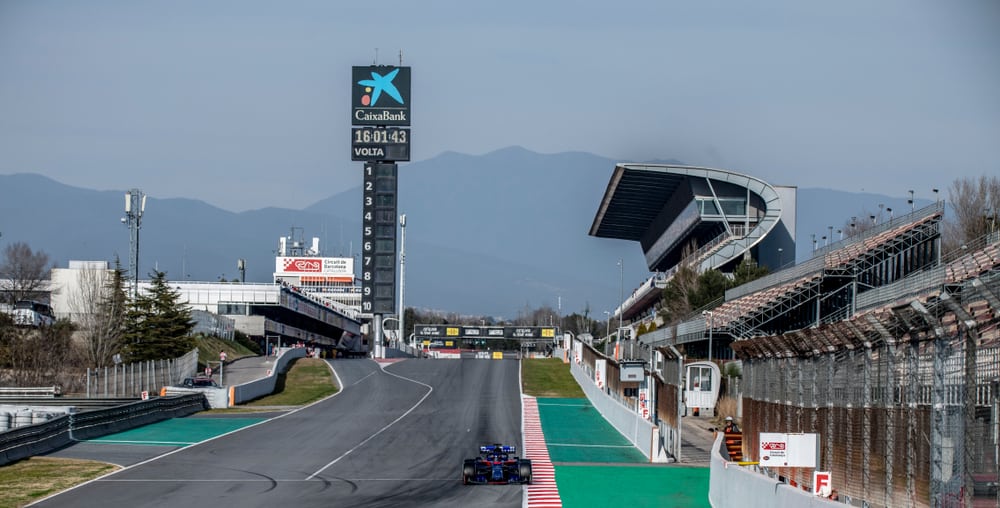
27 – 29 May: Circuit De Monaco

As the most famous street circuit on the calendar, Monaco Grand Prix, plays host to arguably the most extravagant racing circuit in the world due to its winding roads through the Monte Carlo neighborhood of Monaco.
In terms of its role in popular culture through television, movies, news, and general reception, the Monaco Grand Prix could be seen as the face of Formula One.
This is due to Formula One’s reputation as an elite sport that attracts wealthy investors, spectators, and participants.
Monaco has been recognized as a key motorsport event as part of the Triple Dome (the other events being the Indianapolis 500 and Le Mans).
However, despite its prestige, history, world-class location, and Monaco’s production of Formula One drivers, the track itself leaves much to be desired in the modern era.
However, despite the quality of racing, perhaps not living up to the other tracks this season, the occasion of racing at Monaco is still a momentous momentum for fans, teams, investors, and drivers alike!
| Location | La Condamine and Monte Carlo, Monaco |
| Capacity | 37,000 |
| Length | 3.337 km (2.074 mi) |
| Turns | 19 |
| Race Lap Record | 1:12.909 (Lewis Hamilton, Mercedes W12, 2021) |
10 – 12 July: Baku City Circuit

Starting life as the European Grand Prix in 2016, before being named the Azerbaijan Grand Prix in 2017, the Baku City Circuit has earned a reputation as one of the best street circuits on the calendar.
While the castle complex offers easy racing and fantastic scenery, the track shines in its unorthodox approach to design, namely lengthy straights followed by hard 90 degree turns.
This unconventional approach has already brought upsets in its relatively short lifespan. The most recent was the tire blowout for Max Verstappen while leading on the 51st lap and then a subsequent crash by Lewis Hamilton at the restart.
Here’s hoping for more upsets and excitement come Baku on 10 July 2022!
| Location | Azadliq Square, Baku, Azerbaijan |
| Capacity | 18,500 |
| Length | 6.003 km (3.730 mi) |
| Turns | 20 |
| Race Lap Record | 1:43.009 (Charles Leclerc, Ferrari SF90, 2019) |
17 – 19 July: Circuit Gilles Villeneuve

Originally Île Notre-Dame Circuit, this Canadian track was renamed in 1982 in honor of driver Gilles Villeneuve following his passing during the Belgian Grand Prix.
Located on Notre Dame Island in Montreal, the track plays host to the Canadian Grand Prix, with the inaugural Grand Prix taking place in 1978.
Over its history, the track has earned a reputation for being exciting and unpredictable.
One example came in 1999 when Damon Hill, Michael Schumacher, and Jacques Villeneuve all crashed on the exit of the final chicane, now dubbed “the wall of champions.”
It is yet to be seen if future events will shape history at Circuit Gilles Villeneuve come the Canadian Grand Prix on 17 July 2022!
| Location | Parc Jean-Drapeau, Montreal, Quebec |
| Capacity | 100,000 |
| Length | 4.361 km (2.710 mi) |
| Turns | 14 |
| Race Lap Record | 1:13.078 (Valtteri Bottas, Mercedes W10, 2019) |
1 – 3 July: Silverstone Circuit

As both the home of English Formula One and the Formula One World Championship, Silverstone was responsible for the hosting of the inaugural Grand Prix on the 13th of May 1950.
Outside of its history and prestige, the track has retained its classical nature despite numerous changes over the years. That character being Silverstone’s breakneck speed coupled with famous corners such as Maggotts, Becketts, and Abbey.
Given the talent of English drivers on the Formula One circuit in the form of George Russel, Lando Norris, and seven-time world champion Lewis Hamilton, there’s no doubt Silverstone will continue to be one of the most famous circuits on the calendar.
| Location | Silverstone, Northamptonshire, United Kingdom |
| Capacity | 150,000 |
| Length | 5.891 km (3.661 mi) |
| Turns | 18 |
| Lap Record | 1:27.097 (Max Verstappen, Red Bull Racing RB16, 2020) |
8 – 10 July: Red Bull Ring

Despite the Red Bull Ring being subject to three different names: Österreichring, A1-Ring, and now the Red Bull Ring. The Austrian Grand Prix has always taken place at the same circuit in Spielberg.
Located in the valley of the Styrian Mountains, this short circuit lives up to the moniker of dynamite coming in small packages.
The track achieves this by using its natural elevation to its advantage while combining height with long straights and sharp breaking with all of these elements designed to complement modern machinery.
Undoubtedly, this cauldron in a valley will continue to boil over, particularly should we find Mercedes and Red Bull battling it out for the championship titles come 8 July 2022!
| Location | Spielberg, Styria, Austria |
| Capacity | 40,000 |
| Length | 4.318 km (2.683 mi) |
| Turns | 10 |
| Race Lap Record | 1:05.619 (Carlos Sainz Jr., McLaren MCL35, 2020) |
22 – 24 July: Circuit Paul Ricard

Located in the South East of France, the French Grand Prix made its long-awaited return to the Circuit Paul Ricard at Le Castellet.
Perched on a cliff edge among 15th-century architecture, Castellet is a highlight on the calendar for visitors looking to immerse themselves in classical French grandeur.
Sadly the track itself, sporting its modern, vibrant red, white, and blue colors, doesn’t seek to pay homage to its classical surroundings, with many spectators feeling it’s worse off for not doing so.
Couple the above with its recent and comparatively unsuccessful development from a testing track into a racing one, and it can be understood why many a fan would support a fresh new coat of paint and track redesign.
That being said, with some top French drivers such as Pierre Gasly looking to continue his excellent form from the 2021 season, there’s no doubt a vocal group of French flans will light up Circuit Paul Ricard come 22 July 2022!
| Location | Le Castellet, Var, France |
| Capacity | 90,000 |
| Length | 5.842 km (3.630 mi) |
| Turns | 15 |
| Race Lap Record | 1:32.740 (Sebastian Vettel, Ferrari SF90, 2019) |
29 – 31 July: Hungaroring
Known as “Monaco without the walls,” the Hungarian Grand Prix is located at Hungaroring in the small village of Mogyoród.
The circuit is of historical significance as it was the first Grand Prix to be held in the USSR in 1986, where after it continued to be a mainstay on subsequent Formula One calendars.
Although the elevation and winding turns on the track provide extreme challenges for drivers and team engineers alike, the modern design of Formula One vehicles in conjunction with narrow corners means overtaking has proved much harder in recent years.
However, the track’s conditions and the heat coming off the track add an extra layer of complexity, presenting a balancing act of grip and tire degradation. Both of which keep races exciting and unpredictable!
| Location | Mogyoród, Hungary |
| Capacity | 70,000 |
| Length | 4.381 km (2.722 mi) |
| Turns | 14 |
| Race Lap Record | 1:16.627 (Lewis Hamilton, Mercedes W11, 2020) |
26 – 28 August: Circuit De Spa-Francorchamps

Commonly referred to simply as Spa (despite not being situated in the city of Spa), this track has remained the pinnacle of Formula One since its maiden championship back in 1950.
This is because Spa manages to capture the “old school” feel of legendary tracks while also being designed and upgraded in such a way as to accommodate modern Formula One machinery.
Locating among the rolling hills and forests of the Ardennes region, Spa showcases the tranquillity of European nature at its best while providing thrills, after all these years, for modern drivers through complexes such as the Eau Rouge and Raidillon.
Beautiful, ferocious, prestigious, and with so much promise still to come with the advent of new technology, Spa is Formula One at its finest.
| Location | Stavelot, Belgium |
| Capacity | 70,000 |
| Length | 7.004 km (4.352 mi) |
| Turns | 20 |
| Race Lap Record | 1:46.286 (Valtteri Bottas, Mercedes W09, 2018) |
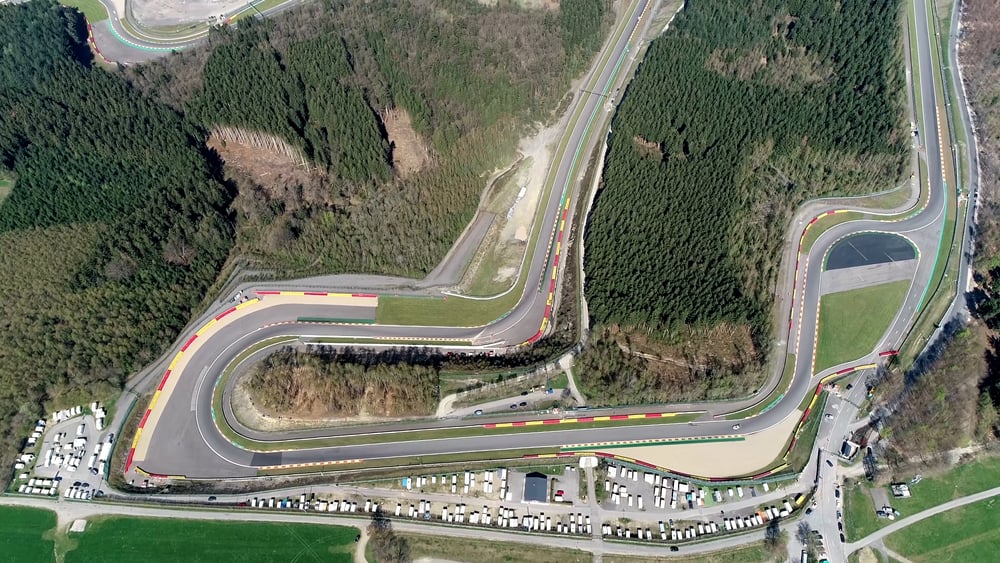
2 – 4 September: Circuit Zandvoort
After various renovations in 2020 to allow for the hosting of modern Formula One events, this newly upgraded track proved to be historical, when Max Verstappen won the 2021 Grand Prix, becoming the first Dutch driver to win in the Netherlands.
Although it remains to be seen if the awe of the track can continue into the 21st century, as it did in yesteryear, there is no doubting the electric atmosphere the Dutch fans bring is bound to continue if Verstappen continues his upward trajectory in the sport come 2 September 2022!
| Location | Zandvoort, North Holland, Netherlands |
| Capacity | 105,000 |
| Length | 4.259 km (2.646 mi) |
| Turns | 14 |
| Race Lap Record | 1:11.097 (Lewis Hamilton, Mercedes W12, 2021) |
9 – 11 September: Autodromo Nazionale Monza
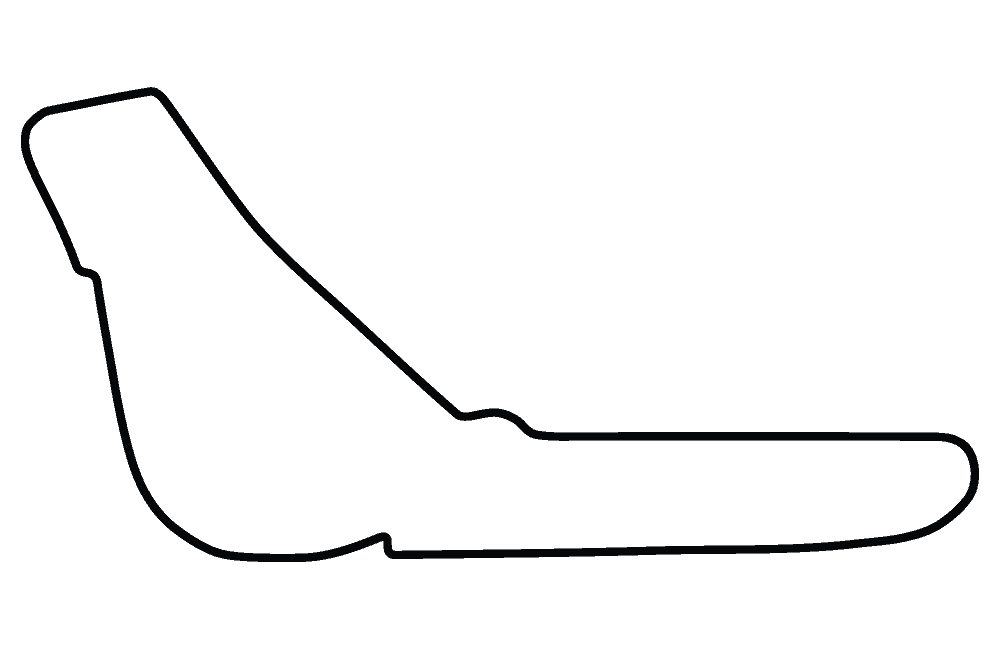
The second Italian Grand Prix of the 2022 Formula One Season, Monza has retained its legendary status as the “temple of speed” since its opening way back in 1922.
Among the hundreds of incidents at Monza over the years, one notable achievement sticks out, that being the fastest lap ever recorded at a Formula One event.
This honor was set by Williams driver Juan Pablo Montoya during practice for the 2004 Grand Prix, which illustrates the ferocious nature of the track, which has been dubbed “La Pista Magica.”
While newer tracks usually provide more significant challenges and increased likelihoods of overtaking for modern machinery, the longevity and allure of Monza will always remain.
| Location | Monza, Italy |
| Capacity | 118,865 |
| Length | 5.793 km (3.600 mi) |
| Turns | 11 |
| Race Lap Record | 1:21.046 (Rubens Barrichello, Ferrari F2004, 2004) |
30 September – 2 October: Marina Bay Street Circuit

Despite missing out on holding a Grand Prix in 2020 and 2021, the Marina Bay Street Circuit will once again play host to the Singapore Grand Prix, adding to the track’s illustrious history since its opening in 2008.
Although street circuits have sometimes been viewed with a level of skepticism for modern machinery, Marina Bay firmly bucks this trend by providing some of the most unique and challenging turns on the Formula One Calendar.
This is illustrated given its bizarre record of having seen over 20 safety car deployments in each of the venue’s twelve Formula One Grand Prixs! While we hope to not see any serious accidents this year, there’s no denying that a return to Marina Bay come 30 September 2022 will be a welcome addition to the calendar!
| Location | Downtown Core and Kallang |
| Capacity | 90,000 |
| Length | 5.063 km (3.146 mi) |
| Turns | 23 |
| Race Lap Record | 1:41.905 (Kevin Magnussen, Haas VF-18, 2018) |
7 – 9 October: Suzuka International Racing Course

Established in 1962 as a test track, a series of extensive upgrades saw Suzuka International Racing Course host its first Formula One Grand Prix in 1987.
Despite being a relative newcomer to the Formula One calendar compared to the competition, the Suzuka circuit has firmly placed itself amongst the upper echelon of Formula One tracks.
The main reason for Suzuka’s success can be attributed to its flowing race lines, which create plenty of opportunities for overtaking and to allow modern Formula One machinery to push their vehicles to the limit.
Including a couple of world-class grandstands overlooking some white knuckle cornering such as the 130R and some snaking “S” Curves, you have one of the best spectator events in all of motorsport.
Here’s hoping Yuki Tsunoda can give the Japanese fans something to shout about come 7 October 2022!
| Location | Suzuka, Mie Prefecture, Japan |
| Capacity | 155,000 |
| Length | 5.807 km (3.609 mi) |
| Turns | 18 |
| Race Lap Record | 1:30.983 (Lewis Hamilton, Mercedes W10, 2019) |
21 – 23 October: Circuit Of The Americas

Nothing illustrates the growing popularity of the sport in America more than the attendance record at the 2021 Grand Prix at the Circuit of the Americas, where the all-time attendance record for an event was beaten by over 40 000 people, for a total of 400 000 fans!
The reason is simple: the track was co-designed by Hermann Tilke, meaning it has some of the best corner combinations of any track in the world, the most notable being the enormous elevation on the first turn and its subsequent turns.
With ample overtaking opportunities and an electric atmosphere, there are positive signs that the Circuit of the Americas may become one of the all-time great tracks in the coming years!
Here’s hoping that the second American Grand Prix lives up to these expectations come 21 October 2022!
| Location | Austin, Texas, United States |
| Capacity | 150,000 |
| Length | 5.513 km (3.426 mi) |
| Turns | 20 |
| Race Lap Record | 1:36.169 (Charles Leclerc, Ferrari SF90, 2019) |
28 – 30 October: Autódromo Hermanos Rodríguez

Hosted at Autódromo Hermanos Rodríguez in Magdalena Mixhuca Sports City, the Mexican Grand Prix is one of Central America’s premium sporting events.
After a series of extensive renovations in 2015 under the supervision of Hermann Tilke, the circuit was approved for Formula One races for the first time in twenty-three years.
The circuit’s location within a sporting complex is wholly unique, leading to a course design that is considered part street track and part permanent track.
This unique design is further complemented by a series of equally exciting and unconventional races since its reopening.
Couple this with passionate crowds cheering on one of the most likable and tough drivers in the form of home favorite Sergio Perez and any visit to the Autódromo Hermanos Rodríguez is bound to leave fans buzzing come 28 October 2022!
| Location | Mexico City, Mexico |
| Capacity | 110,000 |
| Length | 4.304 km (2.674 mi) |
| Turns | 17 |
| Race Lap Record | 1:17.774 (Valtteri Bottas, Mercedes W12, 2021) |
11 – 13 November: Autódromo José Carlos Pace

Autódromo José Carlos Pace, typically referred to as Interlagos, in reference to the neighborhood it finds itself in, is the host of the Brazilian Gand Prix.
As the home of Brazilian Formula racing, it comes as no surprise that Brazilian drivers have had immense success at Interlagos.
Notable examples are consecutive wins in 1973 and 1974 for Emerson Fittipaldi and a follow-up victory by fellow Brazilian Carlos Pace in 1975.
With its carnival atmosphere and an equally bumpy, chaotic, and exciting track to compliment one of the most vibrant cities in the world, Interlagos promises to meet fan expectations come 11 November 2022!
| Location | São Paulo, Brazil |
| Capacity | 60,000 |
| Length | 4.309 km (2.677 mi) |
| Turns | 15 |
| Race Lap Record | 1:10.540 (Valtteri Bottas, Mercedes W09, 2018) |
18 – 20 November: Yas Marina Circuit

Yet another Herman Tilke designed track, the Abu Dhabi Grand Prix, is held at the Yas Marina Circuit situated on Yas Island.
The circuit is famous for having hosted the inaugural day-night race in 2009, whereby floodlights illuminated the track from night to day.
Every subsequent Formula One race at the circuit has done so and remains a calendar highlight; here’s hoping for an explosive finish to the season under lights come 18 November 2022!
| Location | Yas Island, Abu Dhabi, UAE |
| Capacity | 60,000 |
| Length | 5.281 km (3.281 mi) |
| Turns | 16 |
| Race Lap Record | 1:26.103 (Max Verstappen, Red Bull Racing RB16B, 2021) |
Conclusion
Given the level of professionalism and pedigree of racing on display at every Formula One Grand Prix means that all modern Formula One tracks have to meet extremely high standards in order to be considered a host for the Formula One Championship.
Therefore, it would appear that the aforementioned twenty-three tracks over the 2022 season offer a level of diversity, excitement, and prestige to offer fans a fantastic season of quality racing!
References
- https://www.telegraph.co.uk/formula-1/0/best-f1-track-ranking-2021-season-worst-circuit-verdict/
- https://www.whichcar.com.au/opinion/every-current-formula-1-track-ranked
- https://bleacherreport.com/articles/1958704-ranking-the-top-25-circuits-in-the-history-of-formula-1
- https://www.redbull.com/int-en/redbullracing/7-things-about-the-russian-gp
- https://en.wikipedia.org/wiki/Russian_Grand_Prix
- https://en.wikipedia.org/wiki/Circuit_de_Barcelona-Catalunya
- https://en.wikipedia.org/wiki/Albert_Park_Circuit
- https://www.formula1.com/en/information.australia-melbourne-grand-prix-circuit.4LZLnnP4nXDFVVD01EdvvG.html
- https://www.formula1.com/en/information.france-circuit-paul-ricard-le-castellet.2puNt6JNpM6cVBD7YpbTZt.html
- https://en.wikipedia.org/wiki/Circuit_Paul_Ricard
- https://www.formula1.com/en/latest/article.hungary-preview-quotes-the-teams-and-drivers-on-hungaroring.5hCMWm3WDY6wsmAuy2gSM6.html
- https://en.wikipedia.org/wiki/Hungaroring
- https://en.wikipedia.org/wiki/Abu_Dhabi_Grand_Prix
- https://en.wikipedia.org/wiki/2021_Dutch_Grand_Prix
- https://en.wikipedia.org/wiki/Imola_Circuit
- https://en.wikipedia.org/wiki/Bahrain_International_Circuit
- https://en.wikipedia.org/wiki/Circuit_of_the_Americas
- https://www.espn.com/f1/story/_/id/32471853/official-f1-cracked-america-just-beginning
- https://www.topendsports.com/events/motorsports/triple-crown.htm
- https://en.wikipedia.org/wiki/Monaco_Grand_Prix#cite_note-why_not-60
- https://en.wikipedia.org/wiki/Aut%C3%B3dromo_Hermanos_Rodr%C3%ADguez
- https://www.formula1.com/en/racing/2021/Portugal/Circuit.html
- https://en.wikipedia.org/wiki/Algarve_International_Circuit
- https://en.wikipedia.org/wiki/2021_Azerbaijan_Grand_Prix
- https://www.formula1.com/en/information.azerbaijan-baku-city-circuit-baku.5KEzWNQG1x2nLSpfg5xBZh.html
- https://www.formula1.com/en/information.italy-autodromo-nazionale-monza.FiJN1jnQlRLeHqOxIt13m.html
- https://en.wikipedia.org/wiki/Monza_Circuit
- https://en.wikipedia.org/wiki/Istanbul_Park
- https://en.wikipedia.org/wiki/Red_Bull_Ring
- https://www.formula1.com/en/information.austria-red-bull-ring-spielberg.1s7EC2bGta7o1thZkVPbbq.html
- https://en.wikipedia.org/wiki/Interlagos_Circuit
- https://www.formula1.com/en/information.brazil-autodromo-jose-carlos-pace-sao-paulo.5z2RfrmiTTfEP6Wnxv1yIW.html
- https://en.wikipedia.org/wiki/Silverstone_Circuit
- https://www.formula1.com/en/information.great-britain-silverstone-circuit.2DtFVI1FjkYgLVdGhbAIv0.html
- https://en.wikipedia.org/wiki/Suzuka_International_Racing_Course
- https://www.formula1.com/en/information.japan-suzuka-international-racing-course.2XjOiKgIHRRBVVpp5N3S5t.html
- https://www.formula1.com/en/information.belgium-circuit-de-spa-francorchamps.3LltuYaAXVRU8iezEsjzGw.html
- https://en.wikipedia.org/wiki/Circuit_de_Spa-Francorchamps
- https://en.wikipedia.org/wiki/Jeddah_Corniche_Circuit
- https://en.wikipedia.org/wiki/Miami_Grand_Prix
- https://en.wikipedia.org/wiki/Singapore_Grand_Prix

